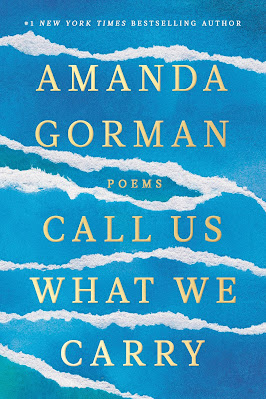 |
| Copenhill Waste-to-Energy Plant, Image from BIG |
Tuesday, January 25, 2022
Yes is More
Tuesday, January 18, 2022
Two Historical "Greats"
 |
| Grand Duchess Catherine Alexeevna by L.Caravaque |
I have just finished reading two fascinating biographies of monarchs so respected by their subjects and the world that they have been proclaimed with the title "The Great." Emperor Peter the First and Empress Catherine the Second, who led Russia during 18th century Russia transformed their country in ways that prepared it for the modern world and greatly improved the standard of living of its citizens.
Both were autocratic monarchs as were the leaders of almost all countries at the time. Both were also successful military strategists that enlarged the Russian empire and made the borders of their country more secure. But those are not the traits that earned them their claim to greatness.
Both Peter, and Catherine two generations later, were declared great because of their intellectual curiosity, willingness to bring experts and expertise from around the world to Russia, and the enthusiasm to use those ideas to transform their country.
 |
| Peter the First by Jean-Marc Nattier |
Peter was raised in a mostly medieval society, reluctant to embrace any new ideas and under strict control of an extremely conservative Orthodox Church. Early in his life, he realized that breaking Russia's isolationism would require a navy and he traveled to the Netherlands to personally learn the art of ship building. He also selected intellectually curious Russians to travel to all of the major capitals of Europe and learn the state-of-the-art methods for manufacturing and governance. When they encountered exceptional teachers, they persuaded them to come back with them to Russia to assist in the country's transformation. Included in the immigrants to Russia were the great architects who built the beautiful city of St. Petersburg.
Catherine was a child of the enlightenment who read and corresponded with French and Swiss philosophers like Voltaire, Diderot, and Rousseau. She also traveled throughout Russia and listened patiently to the concerns of the Russian nobility and the Russian Serfs. Catherine brought European political and judicial processes to Russia along with literature, art, architecture and medicine. She built hospitals, schools and orphanages while assembling the greatest art gallery in Europe. She even persuaded her citizens to be inoculated against smallpox.
If intellectual curiosity and openness to new ideas is the hallmark of greatness, we need to ask what our leaders have been doing in the 20th century that could be classified as great. Regardless of political party, the restrictions on travel, low limits on H-1B visas, and attacks on freedom of speech indicate our leaders appear to be governed mostly by fear; fear of terrorists, fear of infection, fear of people willing to study harder or work harder.
If we truly want to reach our greatest potential, we need to open our minds to new ideas and our country to those who can help us implement new ideas.
You might also like:
Diverse Experience Drives Creativity
Tuesday, January 11, 2022
Good Grief
Since listening to Amanda Gorman read her poem, The Hill We Climb, during President Biden's inauguration, I have been eagerly waiting for her to publish a book with more of her poems. Her book, Call Us What we Carry, was released late last year and I had an opportunity to read it during the holidays.
The poetry focuses intensely on the emotional experience of living through the Covid 19 pandemic. It addresses the fears, stress, and feelings of loss over the last two years. Even those who did not lose loved ones lost the ability to spend time with loved ones and lost the normality of their previous lives.
It is also a book full of hope, recognizing that the experience has changed us in powerful ways. One of my favorites is titled Good Grief and here are a few excerpts:
The hurt is how we know
We are alive & awake;
It clears us for all the exquisite,
Excruciating enormities to come.
We are pierced new by the turning
Forward.
All that is grave need
Not be a burden, an anguish.
Call it, instead, an anchor,
Grief grounding us in its sea.
We are built up again
By what we
Build/find/see/say/remember/know.
You might also like:
Find Something Interesting in People, Always
Tuesday, January 4, 2022
Technology Trends for 2022
 |
| Kia EV6 launching early 2022 |
Energy Storage
This will be a year of significant investment in battery manufacturing and improvements in design to reduce costs and increase vehicle range. Expect to see announcements about solid state battery designs and substitution of some lithium components with other materials including nickle and silicon. These developments will help drive growth in electric vehicles and wearables.
Electrification of Transportation
This will be a year of growing market share in new vehicles with electric or hybrid drive trains. This will be influenced by the advances in energy storage listed above as well as improvements in energy harvesting, electric motors and use of advanced materials and in-mold electronics to reduce vehicle weight. Several new models will be introduced through the year and even more in early 2023.
Artificial Intelligence in Engineering
Expanded and more sophisticated uses of artificial intelligence in design will lead to faster development of pharmaceuticals, more interactive web stores and weight reduction in automotive and aeronautic applications. Generative AI combined with improvements in additive manufacturing is particularly promising for enabling the early electrification of small aircraft. Artificial intelligence will also play an increasing role in the photographic industry.
Keep an eye on these trends as you allocate your research time and investment plans for the upcoming year.
You might also like:

